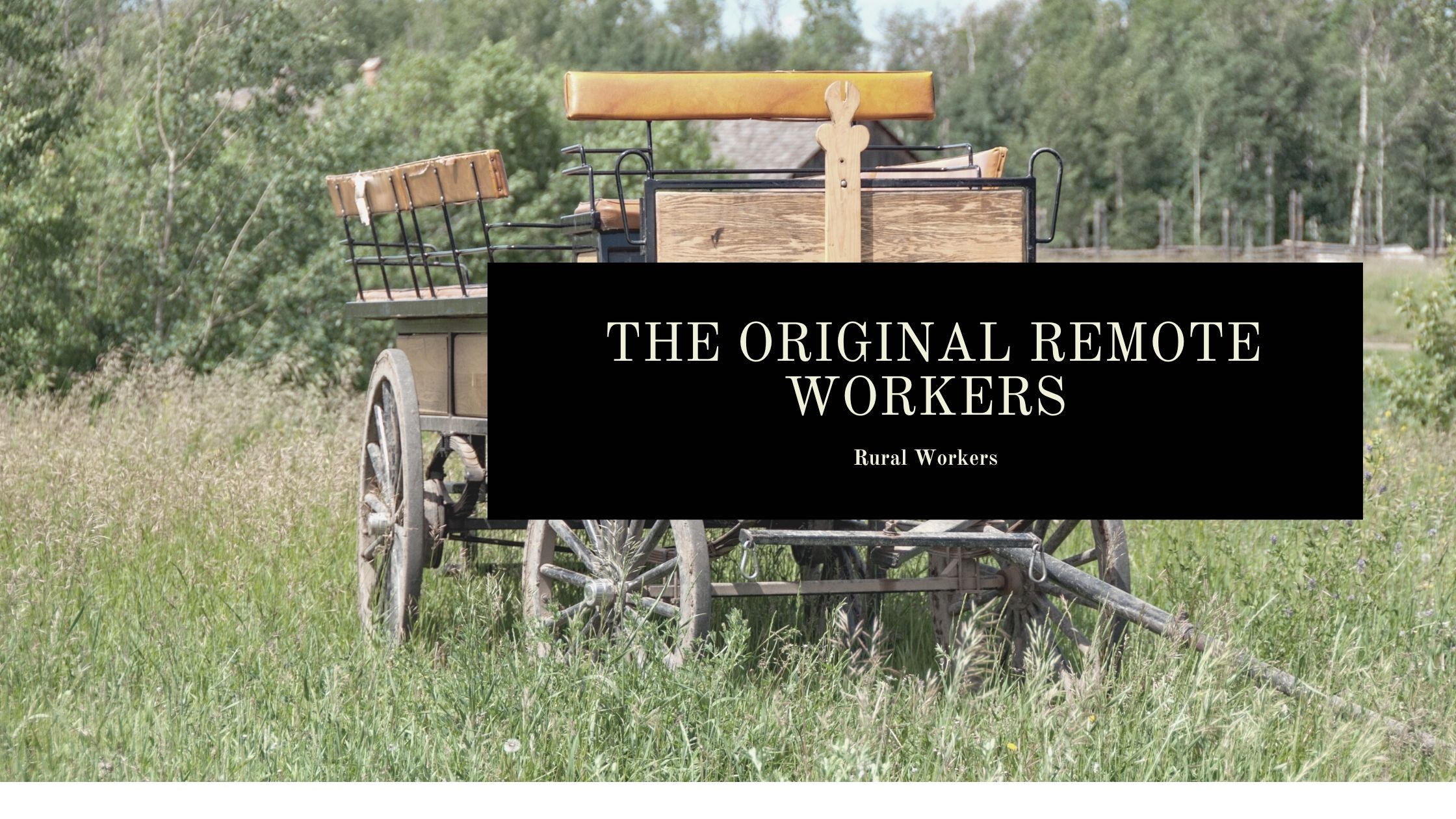
Working from home has come around full circle.
For that generation, it was common for people to live and work in the same place, like above the bakery they owned, which is another one of the many variations of working from home. At some point after that generation, working from home became a weird idea during the generation of my parents. But today, working from home has come around full circle, back to being the norm. The work from home movement was already a growing, popular movement, but in March, COVID-19 gave it booster rockets to fuel more rapid growth.
Technology provides possibilities for rural America.
Not only does the internet, and other technology make it possible for people to work from home in cities, it opens up a new world of possibilities for rural areas. Remote work is of much greater import to people living in rural areas because of their limited access to local jobs or the alternative of a long commute to larger cities.
Millennials go rural.
Having grown up in a small rural town, back then, young people like me had to get in the car and drive to the land of opportunity, the larger metropolitan areas. There were not that many career options for young people in the rural areas, so most of us packed up and hit the road. And now, there is a current, strong and growing trend for millennials to move back to the rural areas from the cities. The thought of that feels a bit surreal to me personally, because I would have ridden my tricycle to get out of the small town. Even as a child, I couldn’t wait to see the world and get to the big city. How can it be possible that people are intentionally moving to places where not only is there no Instacart, it’s not unusual for people to shoot their dinner or catch it in the pond?
It still takes a village. In looking back on growing up in a rural area, I now feel a deeper appreciation for the benefits that small town life provides, and especially from a parent’s perspective. People in small towns get the full, undiluted “it takes a village” experience. Everybody in a small town knows who you are and who your kids are, and they look after each other. Kids have the opportunity to be more connected to nature than they do in cities. Kids learn how to be good neighbors from the good neighbors in the community. Kids go to school with everybody from all walks of life because there is probably only one school.
If you have a conflict with somebody in a store, it’s not like in a city where you’ll probably never see that person again. You will for sure see that person again, over and over, either at church or at school or at football practice. So, it teaches relationship and social skills in a way that can’t be simulated in a city. From that standpoint, I can see why the millennials would want their kids to grow up in Mayberry RFD, plus there are economic benefits as well. After all, it does still take a village.
Rural remote workers can have the best of both worlds. There are still a few places that don’t have access to good, stable high-speed internet today, but those places are becoming fewer by the day. As a virtual call center, even our phones today are not actually physical phones. We use a VOIP cloud phone system that people access using a USB headset. Today’s technology makes it possible for people to leave the rat race behind in the city, move to rural areas, but retain the equivalent earning potential they had in the metropolitan areas through the ability to work from home.
Over the years our company has seen some of the most successful long-term relationships with our own business development specialists who have enjoyed the best of both worlds, the more laid-back lifestyle of country living, while achieving excellent earnings with a flexible schedule working from home. There are many more legitimate opportunities to work from home today than when we first started in business in 1996, and that trend is expected to not only continue, but to accelerate.
About the Author

Tracie Chancellor, CEO and Founder of TeleReach Corporate, national business to business call center specializing in sales appointment setting and lead generation, based in Houston, Texas. Chancellor is an MBA graduate of the University of Houston with over 20 years hands-on sales and marketing experience, working with privately-held businesses, universities, non-profit organizations, as well as Fortune businesses in the business to business marketing space.

